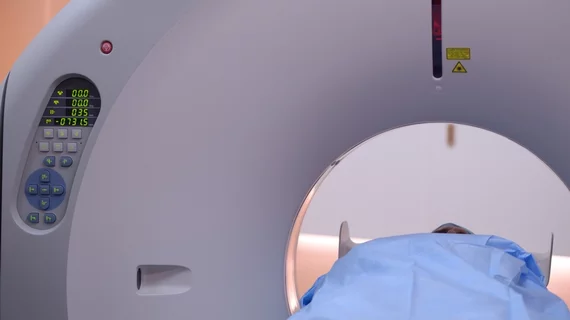CT imaging can help diagnose suspected hip fractures, particularly in situations when MRI is unavailable, according to a Aug. 28 study published in the American Journal of Roentgenology.
Trenton T. Kellock, MD, with Royal Inland Hospital’s Department of Medical Imaging in British Columbia, Canada, and colleagues performed a systematic review and meta-analysis of studies including more than 1,200 patients. They determined CT is a “reasonable” choice to diagnose suspected occult proximal femoral fractures.
“Because conventional CT remains the modality of choice in most emergency departments for the detection or exclusion of radiographically occult hip fractures, owing to its easy availability and rapid image acquisition, accurate assessment of the diagnostic performance of CT is needed to guide patient care, particularly when CT findings are normal,” Kellock and colleagues wrote. “To our knowledge, ours is the first meta-analysis aimed at evaluating the diagnostic performance of CT for assessment of radiographically occult or equivocal proximal femoral fractures on the basis of current primary literature.”
The researchers also prefaced their study by noting hip fractures are associated with high disability rates, healthcare costs and mortality rates. And despite many institution’s reliance on MRI as the modality of choice for occult fractures, the method has certain limitations such as longer delays before imaging is performed and lengthier exam times.
Kellock et al. analyzed 13 studies consisting of 1,248 patients (496 with hip fracture and 752 without) with MRI or clinical follow-up as the reference standard. The results showed a 94% sensitivity and 100% specificity when using CT to diagnose occult hip fractures. There were 50 false-negative exams, the authors noted.
Limitations of this study included diversity within the patient population, study designs and reporting of the articles. Additionally, the reference standard varied “substantially” between included studies, with only three consistently including MRI as such.
“CT can be considered a reasonable choice when occult proximal femoral fracture is suspected, especially if MRI is not readily available or may delay patient care,” the authors wrote. “However, for patients with ongoing clinical concern about hip fracture despite normal CT findings, MRI should be performed, although this clinical scenario affects only approximately 10% of patients undergoing CT for occult proximal femoral fractures.”

